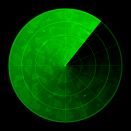   
This lesson builds upon the previous one (Newton's Second Law) by introducing students to kinetic and potential energy. Topics include a brief description of...

In this activity, students quantify and analyze their personal contributions of smog-forming compounds due to driving. The activity builds upon the previous...

This lesson introduces the idea that rates and directions of plate movements can be measured. The discussion centers on the use of mantle 'hotspots' to...

This lesson discusses the question 'What is a mineral?' in the context of the guessing game 'Animal, Vegetable, or Mineral?'. It introduces a definition of the...

Discussion of holes in the stratospheric ozone layer usually revolves around investigations of the thickness of the layer near the South Pole. This online...
|

AMSER is a portal of educational resources and services built specifically for use by those in Community and Technical Colleges but free for anyone to use.
AMSER is funded by the National Science Foundation as part of the National Science Digital Library, and is being created by a team of project partners led by Internet Scout. 
Bruises start out looking red because of hemoglobin, the pigment in red blood cells. As blood pools under the skin, light striking the hemoglobin bounces back and bends through many skin layers, making the bruise look blue, black, or purple.
|
  
Manage your resources
Save, organize, and share resources that you find. Subscribe to bulletins Automatically be notified about new resources that match your interests. It's easy, fast, and FREE! 
AMSER =
FREE ONLINE RESOURCES for the CLASSROOM  |
Copyright 2024 Internet Scout
Resource Metadata
Copyright 2024 Internet Scout
Copyright 2024 Internet Scout
http://amser.org/












